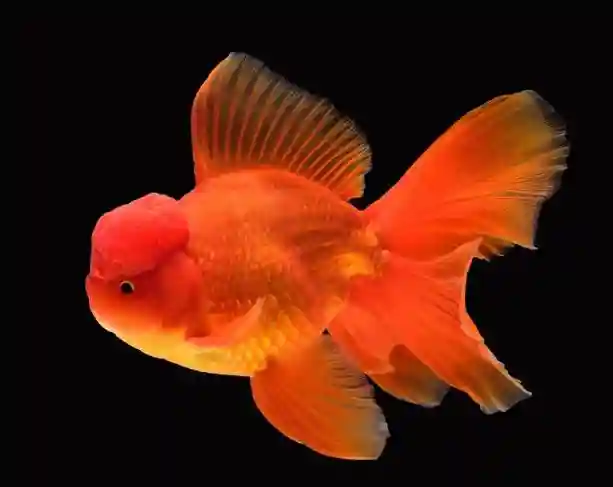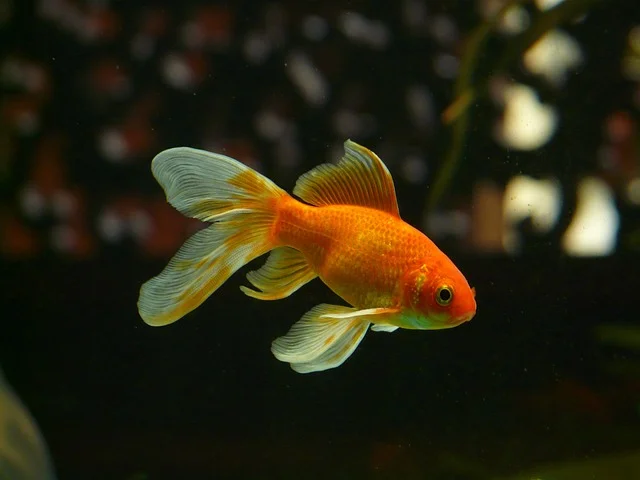Goldfish have long been popular pets due to their vibrant colors, graceful swimming, and soothing presence. There are various types of gold fish available, each with its unique characteristics and traits. In this article, we will explore the different types of goldfish, including fancy goldfish, fan-tailed goldfish, comet goldfish, common goldfish, black moor goldfish, lionhead goldfish, and bubble eye goldfish. So, let’s dive in and discover the fascinating world of goldfish!
Goldfish are freshwater fish belonging to the carp family. East Asia is their native region, and humans have domesticated them for centuries. Over time, selective breeding has resulted in a wide array of goldfish types, each with a distinct appearance and characteristics. Let’s explore some of the most popular types of goldfish.
Fancy Goldfish: Various Types of Gold Fish
Fancy goldfish are known for their ornate features and elegant swimming style. They have unique body shapes, including a rounded or egg-shaped body, double tails, and flowing fins. Here are a few notable varieties of fancy goldfish:
Oranda

The Oranda is a fancy goldfish with a prominent head growth called a wen. This wen covers the top of the fish’s head, giving it a distinctive appearance. Orandas come in various colors, such as red, orange, black, blue, and calico.
Ryukin

Ryukins have a stout and round body shape. They have a hump behind their head, which is more pronounced in older individuals. Ryukins are available in vibrant colors like red, white, orange, and yellow.
Ranchu

Ranchu goldfish have a similar body shape to the Ryukin but lack the hump behind the head. Instead, they have a rounded back and short, stubby fins. Ranchus comes in colors like red, orange, and calico.
Fan-Tailed Goldfish
Fan-tailed goldfish are known for their long, flowing tails and graceful swimming. They have a slim body shape and elegant fins. Let’s explore some popular fan-tailed goldfish varieties:
Veiltail

Veiltail goldfish have long, flowing fins that resemble a veil. They have slender bodies and are available in various colors, including red, orange, black, and calico.
Fantail
Fantails have a double tail fin that spreads out like a fan. They have a round body shape and come in an array of colors. Fantails are often seen in gold, red, orange, and black.
Celestial Eye
Celestial Eye goldfish have upward-pointing eyes, giving them a celestial or stargazing appearance. They have a slim body shape and long fins. Celestial Eye goldfish are typically available in metallic shades of red, orange, and black.
Comet Goldfish
Comet goldfish are known for their slender body shape and long, flowing tails. They are agile swimmers and are often seen in outdoor ponds. Comet goldfish come in colors like red, orange, and yellow.
Common Goldfish
The common goldfish is the ancestor of most domesticated goldfish types. They have a streamlined body shape and a single tail. Common goldfish are typically orange, but they can also be found in other colors.
Black Moor Goldfish
Black Moor goldfish are known for their velvety black coloration and bulging eyes. They have a rounded body shape and long, flowing fins. Black Moor goldfish are delicate and require special care.
Lionhead Goldfish
Lionhead goldfish have a distinct head growth called a hood or wen. This wen covers the entire head, including the gills and eyes. Lionheads come in a variety of colors and have a round body shape.
Bubble Eye Goldfish
Bubble Eye goldfish have large, fluid-filled sacs under their eyes, resembling bubbles. These sacs are delicate and can be easily damaged, so Bubble Eye goldfish require careful handling. They come in various colors, including red, orange, and black.
Caring for Goldfish
Goldfish are relatively easy to care for, but they do have specific requirements. Here are some essential tips for providing optimal care to your goldfish:
- Maintain a suitable tank size.
- Provide proper filtration and aeration.
- Monitor water parameters regularly.
- Perform regular water changes.
- Feed a balanced diet suitable for goldfish.
- Avoid overfeeding to prevent health issues.
- Provide hiding places and adequate swimming space.
- Keep tank mates compatible with goldfish.
- Feeding Goldfish
Goldfish have a diverse diet that includes both plant matter and protein-rich foods. Some suitable food options for goldfish include:
- High-quality goldfish flakes or pellets
- Fresh or blanched vegetables like peas, spinach, and lettuce
- Live or frozen foods like brine shrimp, daphnia, and bloodworms
Feed goldfish in moderation and avoid overfeeding, as it can lead to digestive problems.
Tank Setup for Goldfish
Creating an appropriate tank setup is important for the well-being of your goldfish. Consider the following factors when setting up a tank:
- Tank size: Goldfish require a spacious tank with ample swimming space.
- Filtration: Use a strong filtration system to maintain clean and healthy water.
- Substrate: Choose a substrate that is easy to clean and doesn’t pose a risk to your goldfish.
- Decorations: Add suitable decorations like rocks, driftwood, and plants to create a stimulating environment.
- Lighting: Provide adequate lighting to support plant growth and simulate day-night cycles.
Goldfish Diseases and Health Issues
Goldfish are susceptible to various diseases and health problems. Common issues include swim bladder disorder, fungal infections, bacterial infections, and parasites. It’s essential to monitor your goldfish for any signs of illness, maintain a clean tank, and provide proper nutrition to prevent these problems.
Breeding Goldfish
Breeding goldfish can be a fascinating endeavor. However, it requires careful planning and appropriate conditions. Here are some considerations for breeding goldfish:
- Select compatible pairs with desirable traits.
- Provide a separate breeding tank with suitable conditions.
- Monitor water parameters and maintain optimal temperature.
- Remove eggs and place them in a separate tank for hatching.
- Provide proper nutrition for the fry.
Goldfish Varieties: Colors and Patterns
Goldfish come in a wide range of colors and patterns, adding to their beauty and charm. Some popular goldfish colorations and patterns include:
- Red and orange (common in many varieties)
- Calico (a combination of orange, black, and white)
- Black (seen in Black Moor and some other varieties)
- White (often in combination with other colors)
- Metallic shades (adding a shimmering effect)
Each goldfish variety has its unique combination of colors, creating a visually stunning display in your aquarium.
Which goldfish is best?
There is no definitive answer to which goldfish is the best, as it depends on personal preferences and the specific requirements of the aquarist. Each goldfish variety has its unique characteristics and charm. Some popular goldfish varieties include fancy goldfish like Orandas, Ryukins, and Ranchus, which are known for their ornate features. Comet goldfish are loved for their graceful swimming and vibrant colors. Ultimately, the “best” goldfish is the one that captures your heart and fits well with your aquarium setup.
What kind of goldfish is good for beginners?
For beginners, it is generally recommended to start with hardy and easy-to-care-for goldfish varieties. Common goldfish, such as the Comet goldfish, are a popular choice for beginners due to their resilience and adaptability. They can tolerate a wide range of water conditions and are generally less prone to health issues. Other beginner-friendly goldfish varieties include the Shubunkin and the fantail goldfish. These varieties are relatively easy to care for and make great introductory options for novice aquarists.
What is the biggest type of goldfish?
Comet goldfish typically holds the title for being the biggest type of goldfish. Comets have a long, streamlined body shape and can grow quite large with proper care. They can reach lengths of up to 12 to 14 inches (30 to 35 centimeters) or even more in some cases. Their long, flowing tails add to their impressive size. However, it’s important to note that the size of goldfish can vary depending on various factors, including genetics, diet, and living conditions.
Can different types of goldfish breed?
Yes, different types of goldfish can breed with each other. Goldfish are known to hybridize. Goldfish crossbreed and produce offspring with characteristics of both parent varieties. However, not all goldfish pairings are successful in producing viable offspring. Some combinations may result in sterile or genetically weak offspring. Additionally, some hybrid pairings may lead to health issues or deformities in the offspring. If you are interested in breeding goldfish, it is essential to research and understand the specific pairings and potential outcomes to ensure the well-being of the fish.
Conclusion
Goldfish are fascinating pets that bring beauty and serenity to any aquarium. By understanding the different types of goldfish and providing them with proper care, you can create a captivating underwater world filled with vibrant colors and graceful movements. So, dive into the world of goldfish and enjoy the rewarding experience of keeping these enchanting aquatic companions.
FAQs
-
How long do goldfish live?
Goldfish can live for several years, with some varieties living up to 20 years or more with proper care.
-
Can goldfish live in ponds?
Yes, goldfish can thrive in outdoor ponds, provided the pond has suitable conditions and protection from predators.n goldfish live in ponds?
-
How often should I feed my goldfish?
Goldfish should be fed small portions of food 1-2 times a day, adjusting the quantity based on their appetite.
-
Can goldfish recognize their owners?
Goldfish have a good memory and can learn to recognize their owners through consistent interaction.
-
Can different types of goldfish live together?
Yes, different types of goldfish can live together. It’s important to consider their compatibility and provide enough space for each fish.





Leave a Comment
You must be logged in to post a comment.